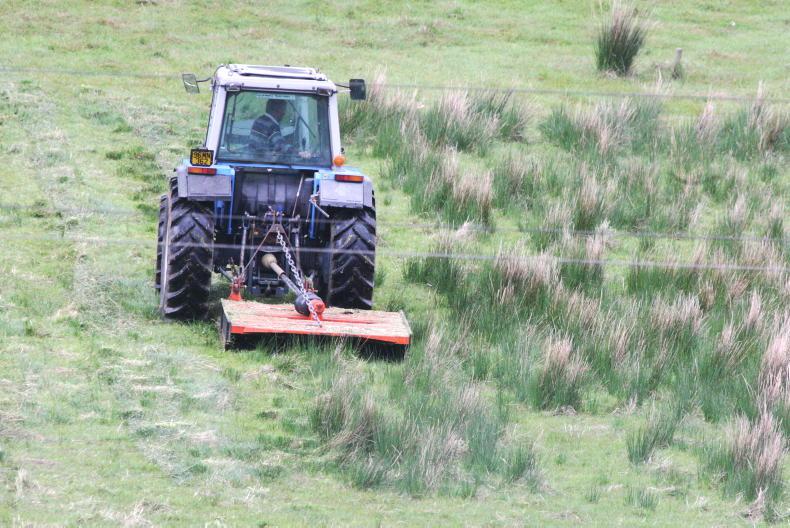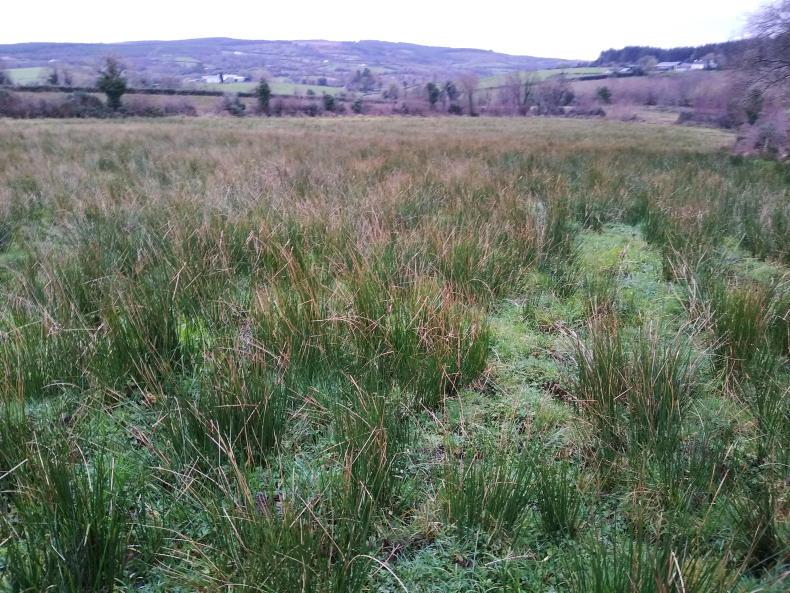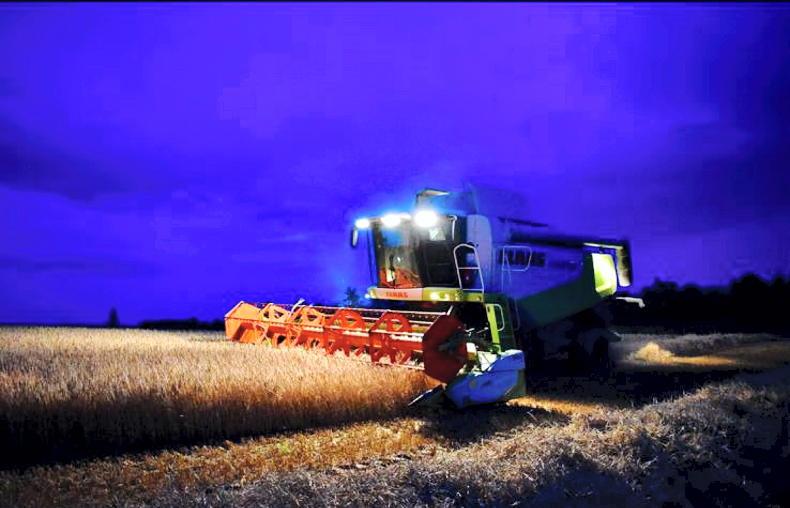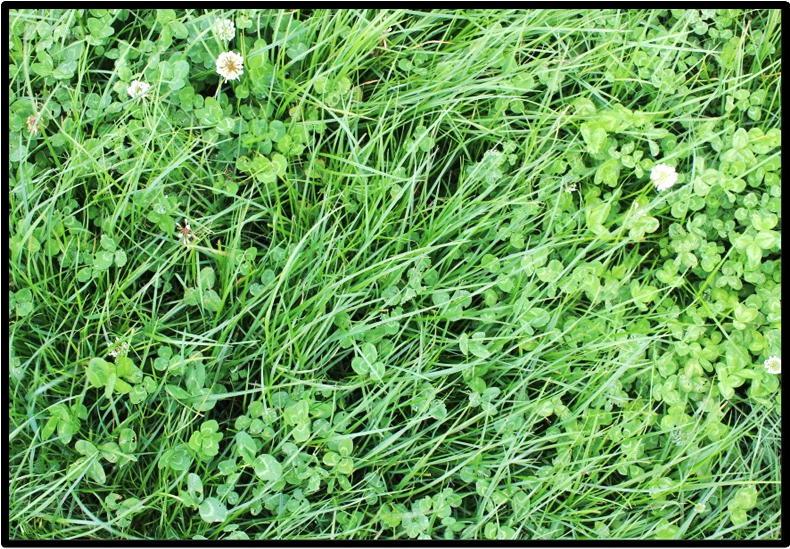A question came in to the editorial team during the week regarding control of rushes. Soft rush is a low nutrient competitive plant that can quickly overcome rough grazing and upland areas if not controlled effectively. Tufts of rushes will shade out underlying grasses, with highly infested areas previously receiving penalties in the Basic Payments Scheme (BPS).
Rushes and water quality
Traditionally, rush control was carried out through cutting and/or spraying with MCPA, a common herbicide used by livestock farmers to control grassland weeds. While effective, MCPA is water soluble and does not bind to soil particles.
Spraying with a boom sprayer inevitably leads to some of the solution not reaching the weed. There is also an associated risk of spray drift causing spray solution to be carried into water bodies, or through being carried by groundwater.
With rushes primarily thriving in wetlands with a raised water body, these areas are even more prone to MCPA leaching in to watercourses. A capful of MCPA entering a river can be detected up to 25km downstream and will remain in the water for up to six weeks. Monitoring of water bodies in high risk areas has shown that the presence of MCPA in our water courses peaks in July/August, the traditional time for spraying rushes. Where boom sprayers are used for controlling rushes, operators must have a professional user (PU) number to purchase and apply the herbicide.

Cutting/topping rushes alone will not lead to long-term control. Regrowths will have to be treated with an appropriate herbicide.
Using low drift nozzles is recommended, as well as only using the spray in appropriate weather conditions – a calm, cool day with no rain or drizzle forecast. Buffer zones of 5m must be maintained from all water bodies, which include dry drains. If it has the ability to carry water, it is regarded as a water body.
All containers should be triple rinsed and pierced after use to ensure they are not to be used again for other purposes. The sprayer itself should also be triple rinsed, including pumping clean water through the boom with the washings sprayed on to grasslands.
ASSAP and weed licking
As an alternative to boom spraying with MCPA, Teagasc’s ASSAP programme and its associated advisers have been promoting the use of weed lickers with a glyphosate solution.
MCPA is not permitted for use in weed lickers or knapsack sprayers, but glyphosate can be used. Weed wiping uses significantly less chemical, with the solution directly applied on to the rush surface.
Weed wiping also has the benefit of eliminating spray drift, meaning it can be carried out on a breezy day. When carrying out weed wiping, a sticking agent can also be used.

Rushes are a low nutrient competive plant which can shade out underlying grasses.
The waxy cuticle (skin) of the rush is hard to penetrate, with the sticking agent aiding the chemical in entering the soft inner parts of the plant. When either spraying or licking rushes, a better control will be seen where fresh, green regrowth is treated. Topping or cutting stronger, dead material is recommended, with the regrowth treated six to eight weeks later.
Non-chemical methods of rush control should also be explored. Soil testing to ensure soils have optimum P and K levels, as well as a pH close to 6.5, will help reduce the prevalence of rushes in swards. Maintenance of existing drains and the creation of new ones to eliminate water-logged areas will also help in rush control.
Research
Little research has been done on the effectiveness of various methods in combatting rushes. CAFRE conducted trials on several sites in 2014 to evaluate the efficacy of various methods of rush control – cut only, cut and weed wipe with glyphosate, weed wipe with glyphosate and spray with MCPA, with the control being no cutting or chemical treatment.
The findings on the trial indicated that ‘cut and weed wipe’ was the most effective, reducing rush cover by 50%-68%, with ‘weed wipe only’ reducing cover by 50%-65%.
Spraying with MCPA was found to reduce rush cover by 42%-55%, with the ‘cut only’ method acting as a temporary control only of rushes, with cover ultimately increasing over time.
Correct soil fertility and drainage issues to begin with.Top/cut old growth to remove the dead material.Use a weed wipe with a glyphosate solution to treat regrowth after six to eight weeks.Maintain a 5m buffer zone with all water courses if using MCPA in a boom sprayer.
A question came in to the editorial team during the week regarding control of rushes. Soft rush is a low nutrient competitive plant that can quickly overcome rough grazing and upland areas if not controlled effectively. Tufts of rushes will shade out underlying grasses, with highly infested areas previously receiving penalties in the Basic Payments Scheme (BPS).
Rushes and water quality
Traditionally, rush control was carried out through cutting and/or spraying with MCPA, a common herbicide used by livestock farmers to control grassland weeds. While effective, MCPA is water soluble and does not bind to soil particles.
Spraying with a boom sprayer inevitably leads to some of the solution not reaching the weed. There is also an associated risk of spray drift causing spray solution to be carried into water bodies, or through being carried by groundwater.
With rushes primarily thriving in wetlands with a raised water body, these areas are even more prone to MCPA leaching in to watercourses. A capful of MCPA entering a river can be detected up to 25km downstream and will remain in the water for up to six weeks. Monitoring of water bodies in high risk areas has shown that the presence of MCPA in our water courses peaks in July/August, the traditional time for spraying rushes. Where boom sprayers are used for controlling rushes, operators must have a professional user (PU) number to purchase and apply the herbicide.

Cutting/topping rushes alone will not lead to long-term control. Regrowths will have to be treated with an appropriate herbicide.
Using low drift nozzles is recommended, as well as only using the spray in appropriate weather conditions – a calm, cool day with no rain or drizzle forecast. Buffer zones of 5m must be maintained from all water bodies, which include dry drains. If it has the ability to carry water, it is regarded as a water body.
All containers should be triple rinsed and pierced after use to ensure they are not to be used again for other purposes. The sprayer itself should also be triple rinsed, including pumping clean water through the boom with the washings sprayed on to grasslands.
ASSAP and weed licking
As an alternative to boom spraying with MCPA, Teagasc’s ASSAP programme and its associated advisers have been promoting the use of weed lickers with a glyphosate solution.
MCPA is not permitted for use in weed lickers or knapsack sprayers, but glyphosate can be used. Weed wiping uses significantly less chemical, with the solution directly applied on to the rush surface.
Weed wiping also has the benefit of eliminating spray drift, meaning it can be carried out on a breezy day. When carrying out weed wiping, a sticking agent can also be used.

Rushes are a low nutrient competive plant which can shade out underlying grasses.
The waxy cuticle (skin) of the rush is hard to penetrate, with the sticking agent aiding the chemical in entering the soft inner parts of the plant. When either spraying or licking rushes, a better control will be seen where fresh, green regrowth is treated. Topping or cutting stronger, dead material is recommended, with the regrowth treated six to eight weeks later.
Non-chemical methods of rush control should also be explored. Soil testing to ensure soils have optimum P and K levels, as well as a pH close to 6.5, will help reduce the prevalence of rushes in swards. Maintenance of existing drains and the creation of new ones to eliminate water-logged areas will also help in rush control.
Research
Little research has been done on the effectiveness of various methods in combatting rushes. CAFRE conducted trials on several sites in 2014 to evaluate the efficacy of various methods of rush control – cut only, cut and weed wipe with glyphosate, weed wipe with glyphosate and spray with MCPA, with the control being no cutting or chemical treatment.
The findings on the trial indicated that ‘cut and weed wipe’ was the most effective, reducing rush cover by 50%-68%, with ‘weed wipe only’ reducing cover by 50%-65%.
Spraying with MCPA was found to reduce rush cover by 42%-55%, with the ‘cut only’ method acting as a temporary control only of rushes, with cover ultimately increasing over time.
Correct soil fertility and drainage issues to begin with.Top/cut old growth to remove the dead material.Use a weed wipe with a glyphosate solution to treat regrowth after six to eight weeks.Maintain a 5m buffer zone with all water courses if using MCPA in a boom sprayer. 











SHARING OPTIONS